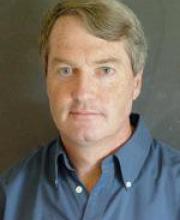Polchinski Shares Prestigious Dirac Medal
(Originally published by the University of California, Santa Barbara)
August 13, 2008
Joseph G. Polchinski, professor of physics at the University of California at Santa Barbara (UCSB) and a permanent member of the Kavli Institute for Theoretical Physics (KITP), has been awarded the 2008 Dirac Medal by the International Centre for Theoretical Physics (ICTP).
Polchinski shares the Dirac Medal with physicists Juan Maldacena of the Institute for Advanced Study in Princeton and Cumrun Vafa of Harvard University. They are being recognized for their fundamental contributions to string theory, sometimes called “the theory of everything” on account of its attempt to unify the two overarching, but as yet unreconciled, edifices of 20th century physics--quantum mechanics and general relativity.
Specifically, Polchinski was cited for a discovery that laid “the foundation of many duality conjectures,” that in turn indicate that the five initial and “seemingly different string theories in 10-dimensions unify into a single theory called the M-theory,” which has yet to be discovered. The duality conjectures have provided a powerful indication of the validity of string theory because these dualities connect string theory to the Gauge theories of the Standard Model of particle physics, which have been experimentally tested and proved with a high degree of confidence.
Polchinski said, “I am pleased to be in such good company with this Medal. Dirac is one of the great figures in the discovery of quantum theory, and his later work continues to be influential today. His insights about electric and magnetic charges played a direct role in my own work on D-branes. It is an honor also to share the Medal with Juan and Cumrun, both of whom are deep and creative physicists.”
The Dirac Medal is the second award Polchinski has shared with Maldacena. In 2007 they were named co-recipients of the Dannie Heineman Prize for Mathematical Physics.
With an accompanying monetary award of $5,000, the Dirac Medal has been conferred annually since 1985 on Dirac’s Aug. 8 birthday under the auspices of the International Centre for Theoretical Physics (ICTP). Three previous winners, including KITP Director David Gross, have gone on to win the Nobel Prize in Physics.
Founded in 1964 by Physics Nobel laureate Abdus Salam in Trieste, Italy, ICTP functions under agreements between the Italian government and two United Nations agencies, including UNESCO.
Polchinski, the principal discoverer of D-branes and their properties, is widely recognized as one of the leading field and string theorists of his generation.
String theory affords the best approach to date to a grand theory that encompasses gravity and the other three forces described by the Standard Model of particle physics (the electromagnetic, weak and strong forces). Strings and branes are the essential structures in string theory.
Instead of being only one-dimensional like strings, branes can have any dimensionality, including one. One-dimensional branes are called “D1 branes or D strings.” So there are essentially two types of strings--the heterotic string or “F” (for “fundamental”) string, which physicists knew about prior to Polchinski’s 1995 discovery, and the “D string,” or one-dimensional brane.
Polchinski is the author of a two-volume text on string theory, which is already a classic in the field.
The native New Yorker received a BS degree from the California Institute of Technology in 1975 and his PhD from Berkeley in 1980. After two two-year stints as a research associate first at the Stanford Linear Accelerator (SLAC) and then at Harvard, Polchinski joined the faculty at the University of Texas at Austin as an assistant professor in 1984. He advanced to associate professor there in 1987 and to professor in 1990. He accepted his professorial appointment at Santa Barbara in 1992.
Recipient of an Alfred P. Sloan Fellowship from 1985 to 1989, Polchinski was elected a fellow of the American Physical Society in 1997 and a member of the American Academy of Arts and Sciences in 2002 and the National Academy of Sciences in 2005.
